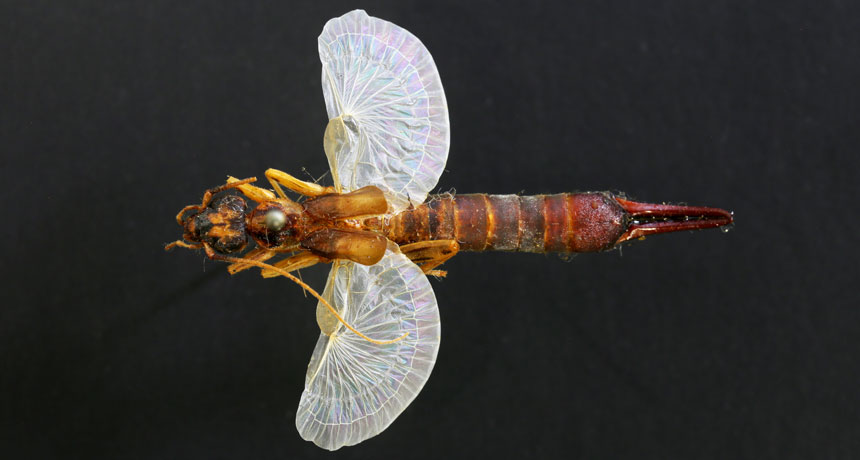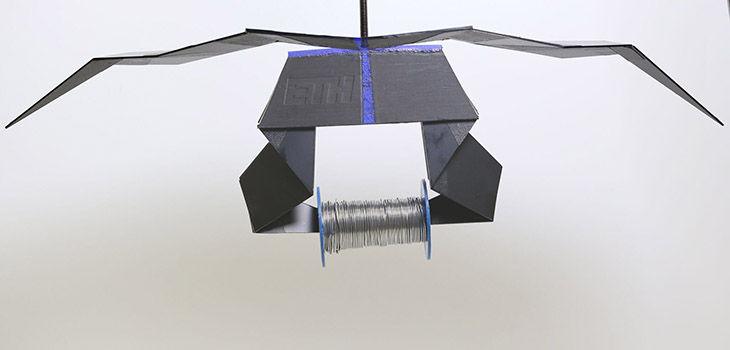
WINGING IT Earwigs don’t normally reveal their wings, but the folded-up appendages unfurl on demand and lock into place until refolded.
Jakob Faber/ETH Zürich
- More than 2 years ago
To quickly unfurl and refold their wings, earwigs stretch the rules of origami.
Yes, those garden pests that scurry out from under overturned flowerpots can also fly. Because earwigs spend most of their time underground and only occasionally take to the air, they pack their wings into packages with a surface area more than 10 times smaller than when unfurled, using an origami-like series of folds. Springy wing joints let the insects bypass some of the mathematical constraints that normally limit the way a rigid two-dimensional material can be folded, researchers report March 23 in Science.
Earwig wings’ folding pattern should be impossible according to mathematical equations that predict the three-dimensional designs that can be made by folding a two-dimensional material like a sheet of paper, says study coauthor Andres Arrieta, a mechanical engineer at Purdue University in West Lafayette, Ind.
Origami theory assumes that the material being folded is perfectly rigid. But the joints of earwigs’ wings — where creases form — are rich in a rubbery polymer called resilin. This little bit of stretch lets earwig wings do what a regular origami structure can’t: lock into two different conformations, open or folded up, and transition between the two.
WING SPRING A simulation captures the way that the springy joints in the earwig wing allow it to crumple in a way that wouldn’t work out according to the strict mathematical rules of origami folding. Researchers used the same approach to design a structure that can lock into either a mostly flat configuration or a bent one. |
It’s an example of a bistable structure — something like the slap bracelets, popular in the 1980s and 1990s, which switch from a flat conformation to a curved one when whacked against a wrist, says study coauthor André Studart, a materials scientist at ETH Zürich. When locked open, earwig wings store energy in the springy resilin joints. When that strain is released, the wings rapidly crumple back to their folded position.
Such constructions can inform robotics design. Inspired by the wings, the researchers created a prototype gripper. Its rigid pieces are held together by rubbery, strategically placed joints. Within fractions of a second, the structure can snap from its mostly flat conformation to one that can grip a small object and hold it without constant external force.

While other materials scientists have pushed the limits of origami by making flat pieces bendable, this design instead stretches the hinges, says Jesse Silverberg, a physicist at Harvard University who wasn’t part of the study. Such a design has been observed and discussed, but never before been implemented in this way.
The earwig “is a beautiful example of how nature uses slight extensions to ideal mathematical origami to do something amazing,” says Itai Cohen, a physicist at Cornell University who wasn’t part of the study.
Perhaps that’s a slight redemption for the much-maligned insect.






